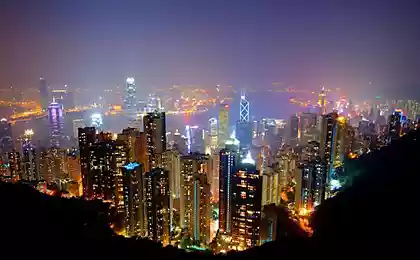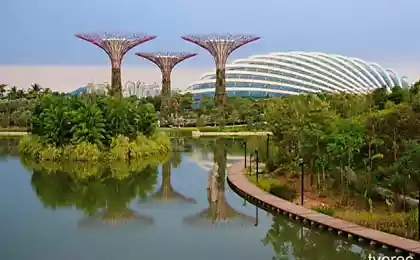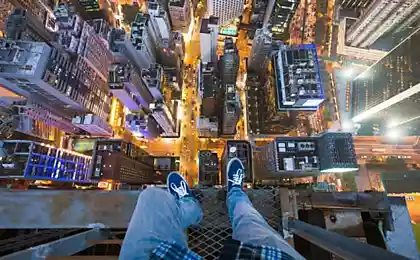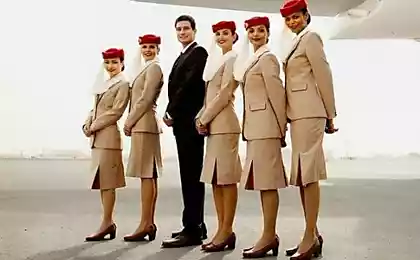2125
Lost Hong Kong
Who Hong Kong associated with double-decker trams; The huge planes sitting down in the center of the city and the famous fortress city of Kowloon; I want to upset you, all this is gone.
Only the trams, the slums were demolished in the early '90s, and the airport was closed Kai Tak Airport in 1998.
All this can only recall the photos, what you and I propose to do.

01. "Kai Tak" was founded in 1922, there were not any skyscrapers.

02. The city grew and soon the airport was almost in the very center.
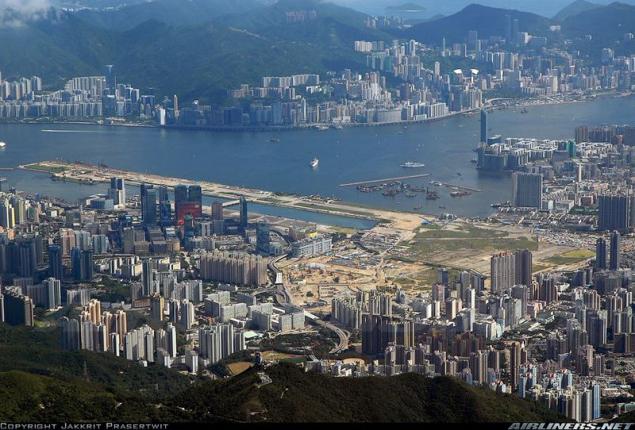
03. The location of the airport is surrounded by high hills and close to the water, as well as the availability of residential buildings in the immediate vicinity airport "Kai Tak" was considered one of the most dangerous airports in the world, and landing aircraft at the airport looked very spectacular in his mind extremeness.
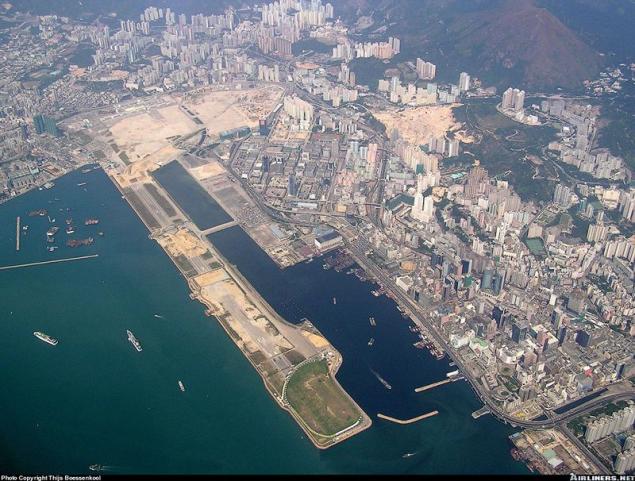
04. Sunset on the runway due to its complexity and entertainment gained worldwide fame. Reducing the point was made on the outside of the airport in the north-east over the busiest port and populated areas. Complete rotation on the landing course was carried out on the landmark, combined with a middle marker. At this point, at a distance of 3, 7 km from touchdown crew had to perform a U-turn at 47 °. Usually the entrance to the right turn was carried out at an altitude of about 200 meters, and direct access to the preplant - 40 meters.
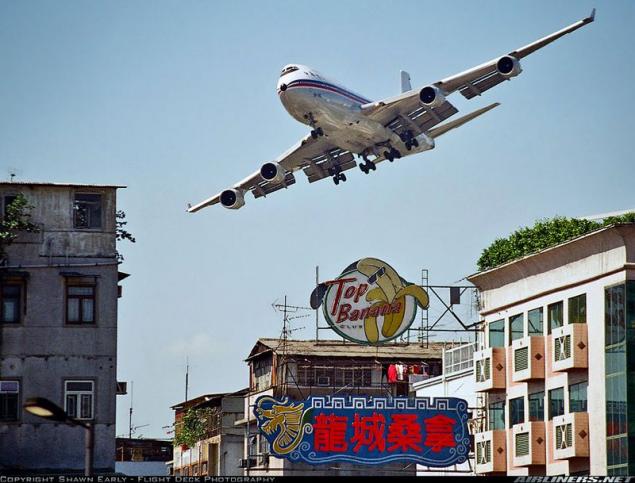
05. Landing airplane
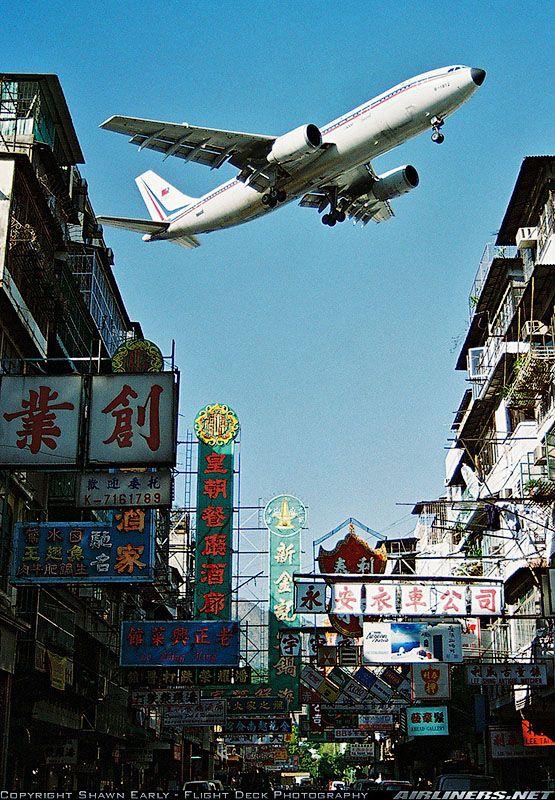
06. On the Ground sitting down planes also looked impressive

07. Beauty

08.
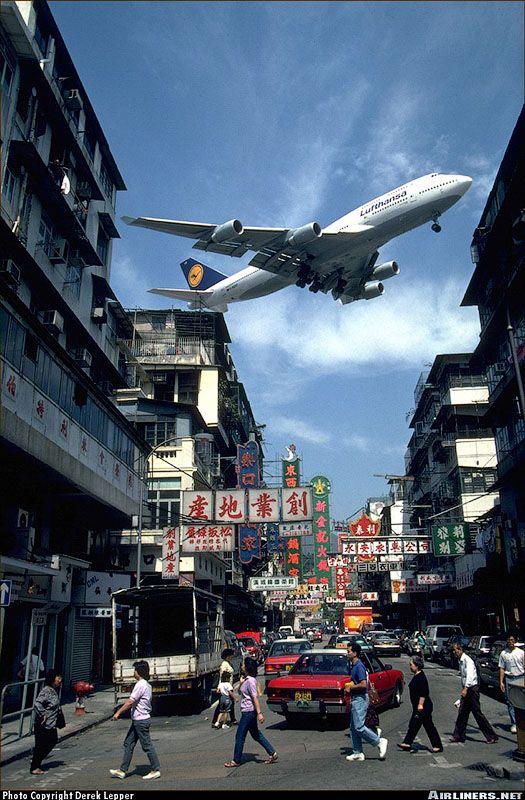
09.

10.

11.
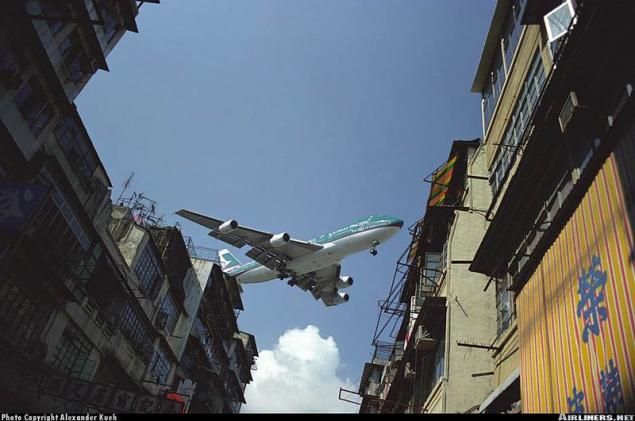
12.

13.

14.

15. Now about the slums of Kowloon's famous "walled city».

16. Until 1994, the territory of 26 thousand square meters of living 50 thousand people - two living souls on every square meter ...

17. I publish photos taken by Canadian photographer Greg Girardi in collaboration with Jan Lambotom, together they spent five years getting acquainted with the notorious Chinese city before it was destroyed in 1992.

18. In 1898, the British established on Hong Kong Island colony. The only place that the Chinese have not given - it is an outpost of Kowloon, enclosed with a protective wall. Chinese authorities would thus keep the small area where you can exercise at least some control actions colonists - so that they do not really raspoyasyvalis.

19. Soon, the British decided to seize Kowloon. Game worth the candle, it seems, was not worth - a stone wall, they did not find anything interesting. In general, the "invasion" has turned out very stupid, and the right to Kowloon and hung in the air. The only change that happened then - a new English name of Kowloon Walled City - «Kowloon Walled City Park».

20. As a result of the strengthening of Kowloon and remained at the mercy of China - in its various "versions" - and when he became the Republic of China in 1911, and in 1949, when he turned to China. And the British began to develop the area around.

21. At the end of the war and the founding of the People's Republic of city began to slowly populate the criminals, as well as refugees from the mainland of China.

22. In the 1970s, the city-fortress (in fact no longer a fortress). Since none of the Kowloon looked after, then such persons flock there by the thousands. Although, of course, there were also quite decent citizens who lived there a long time and returned after the departure of the Japanese.
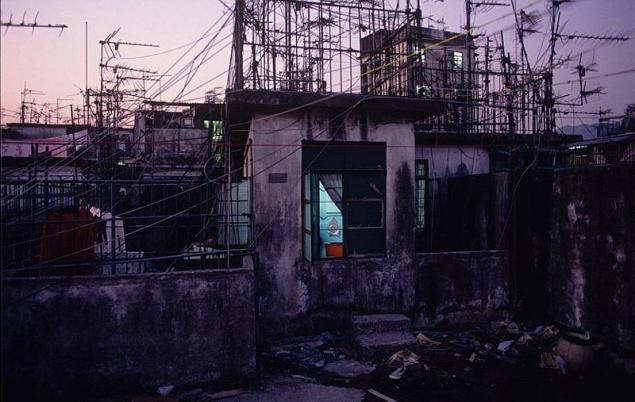
23. One way or another, but the population grew rapidly, and by the early '80s of the last century reached 30 thousand. The housing issue is simple: there were built more and more high-rise buildings, new floors are attached. The place was small, but nevertheless the inhabitants became more and more.

24. Slum population grew rapidly and soon reached 50 000. In a tiny room at times lived from a few people; sometimes there was more some institution.
25. In the early 90's famous quarter was demolished and in its place have broken park.

28. The postman walks through the narrow streets.

29. Small gaps between the houses - is actually a street. And this is the main place where garbage is thrown: the system of waste disposal work in such conditions, to put it mildly, weak

30.

31.

32. The appearance of homes - or rather, this solid residential monolith. Standard balcony - a "birdcage", closed on all sides lattices, which is convenient to hang various items, saving space; and, of course, this is a good way to protect against thieves, who now, for historical reasons, too much

33.
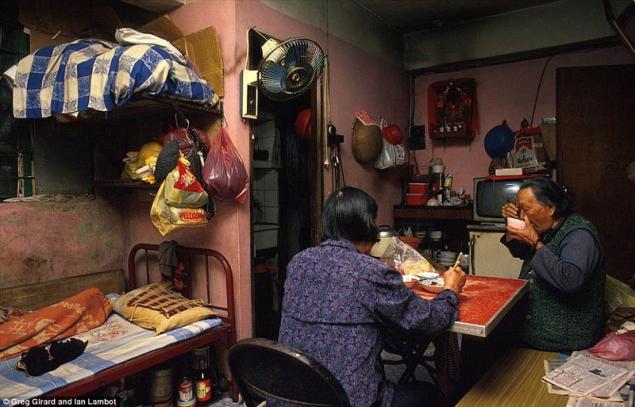
Source: zyalt.livejournal.com
Only the trams, the slums were demolished in the early '90s, and the airport was closed Kai Tak Airport in 1998.
All this can only recall the photos, what you and I propose to do.

01. "Kai Tak" was founded in 1922, there were not any skyscrapers.

02. The city grew and soon the airport was almost in the very center.

03. The location of the airport is surrounded by high hills and close to the water, as well as the availability of residential buildings in the immediate vicinity airport "Kai Tak" was considered one of the most dangerous airports in the world, and landing aircraft at the airport looked very spectacular in his mind extremeness.

04. Sunset on the runway due to its complexity and entertainment gained worldwide fame. Reducing the point was made on the outside of the airport in the north-east over the busiest port and populated areas. Complete rotation on the landing course was carried out on the landmark, combined with a middle marker. At this point, at a distance of 3, 7 km from touchdown crew had to perform a U-turn at 47 °. Usually the entrance to the right turn was carried out at an altitude of about 200 meters, and direct access to the preplant - 40 meters.

05. Landing airplane

06. On the Ground sitting down planes also looked impressive

07. Beauty

08.

09.

10.

11.

12.

13.

14.

15. Now about the slums of Kowloon's famous "walled city».

16. Until 1994, the territory of 26 thousand square meters of living 50 thousand people - two living souls on every square meter ...

17. I publish photos taken by Canadian photographer Greg Girardi in collaboration with Jan Lambotom, together they spent five years getting acquainted with the notorious Chinese city before it was destroyed in 1992.

18. In 1898, the British established on Hong Kong Island colony. The only place that the Chinese have not given - it is an outpost of Kowloon, enclosed with a protective wall. Chinese authorities would thus keep the small area where you can exercise at least some control actions colonists - so that they do not really raspoyasyvalis.

19. Soon, the British decided to seize Kowloon. Game worth the candle, it seems, was not worth - a stone wall, they did not find anything interesting. In general, the "invasion" has turned out very stupid, and the right to Kowloon and hung in the air. The only change that happened then - a new English name of Kowloon Walled City - «Kowloon Walled City Park».

20. As a result of the strengthening of Kowloon and remained at the mercy of China - in its various "versions" - and when he became the Republic of China in 1911, and in 1949, when he turned to China. And the British began to develop the area around.

21. At the end of the war and the founding of the People's Republic of city began to slowly populate the criminals, as well as refugees from the mainland of China.

22. In the 1970s, the city-fortress (in fact no longer a fortress). Since none of the Kowloon looked after, then such persons flock there by the thousands. Although, of course, there were also quite decent citizens who lived there a long time and returned after the departure of the Japanese.

23. One way or another, but the population grew rapidly, and by the early '80s of the last century reached 30 thousand. The housing issue is simple: there were built more and more high-rise buildings, new floors are attached. The place was small, but nevertheless the inhabitants became more and more.

24. Slum population grew rapidly and soon reached 50 000. In a tiny room at times lived from a few people; sometimes there was more some institution.
25. In the early 90's famous quarter was demolished and in its place have broken park.

28. The postman walks through the narrow streets.

29. Small gaps between the houses - is actually a street. And this is the main place where garbage is thrown: the system of waste disposal work in such conditions, to put it mildly, weak

30.

31.

32. The appearance of homes - or rather, this solid residential monolith. Standard balcony - a "birdcage", closed on all sides lattices, which is convenient to hang various items, saving space; and, of course, this is a good way to protect against thieves, who now, for historical reasons, too much

33.

Source: zyalt.livejournal.com




